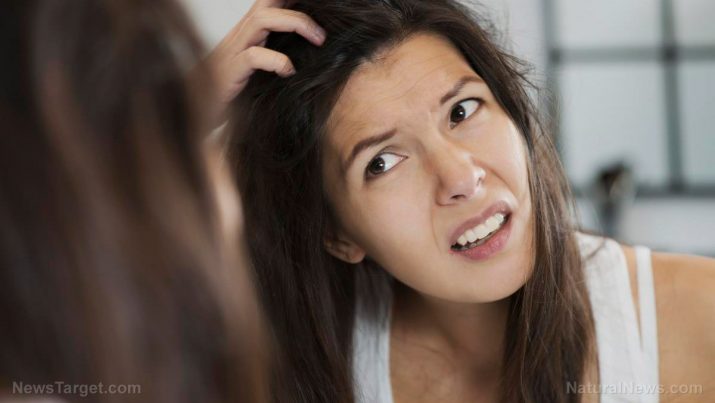Natural ways to get rid of lice in a post-SHTF world
Thursday, June 25, 2020 by Zoey Sky
http://www.bugout.news/2020-06-25-getting-rid-of-lice-post-shtf.html

Hygiene and sanitation are crucial to your preps. Maintaining proper hygiene and sanitation keeps your surroundings clean and helps prevents the spread of diseases.
If you were to face a long-term survival scenario, do you have the supplies necessary to address a lice infestation among your family members? (h/t to SurvivalBlog.com)
The life cycle of lice
Humans can be infected by three kinds of lice identified by the area of your body that they infect: Head lice, body lice and pubic lice.
Head and pubic lice will breed on your skin and hair while body lice can be found in fabrics. Lice can’t jump or fly, but they spread by crawling. Human lice don’t live on other animals.
Lice have three life stages: Nit (egg), nymph (lice larva) and adult.
Nits
Depending on the temperature, nits can hatch from five to 10 days. Nits will hatch faster in warmer temperatures.
Nits are tiny. These light-colored pests attach to hair for head and pubic lice, and to fabric for body lice. Nits won’t move when nudged with a finger, but you can use a special fine-toothed comb to get rid of them.
Nymphs
Nymphs grow for at least one week before they mature and lay nits.
Adults
Adults will live for at least 30 days if they can feed on human blood. While adult head and pubic lice die after 48 to 72 hours with no blood, the Centers for Disease Control and Prevention (CDC) notes that body lice can live for a week off a human.
Adult lice look like sesame seeds. Head and body lice have a segmented body and six legs.
Pubic lice have six legs, but they are shaped like tiny sea crabs. Lice can be tan or brown-gray.
Types of human lice
Head lice will lay eggs in your eyebrows and all the way to the nape of your neck.
Head lice spread via close contact with someone who already has them or exposure to an object used by someone with lice, like a comb, hairbrush or a pillow.
Head lice bites may appear as small reddish or pink bumps, with crusted blood. Scratching bites can cause infection.
Body lice can be found anywhere on your body except your head or genitals. They thrive and lay eggs in clothes and bedding.
Body lice often spread in the homes of people who share the same clothes or bedding for a long time without laundering them. This type of lice spreads by direct contact with the fabrics they infest.
Pubic lice or crabs infest the wiry hair around your genitals. Pubic lice may also spread to your underarm area, chest hair and eyebrows.
Pubic lice are usually spread via sexual contact and they are most common in sexually active teenagers and adults. Itchy spots or intense itching in the hair-covered area near your genitals may indicate pubic lice, along with small reddish or pink bumps on your skin.
Why lice infections are dangerous in a post-SHTF world
In normal times, lice may be nothing more than an inconvenience. But if you or your loved ones get lice in a long-term survival scenario, they can do more than make you uncomfortable.
Constantly scratching bites can cause infections, which can be difficult to treat after SHTF. Lice can spread trench fever and typhus.
Trench fever epidemics spread in Europe during World War I and World War II. The condition causes symptoms like dizziness, headache, malaise and shin pain. While trench fever is non-fatal, it can make you uncomfortable.
Typhus is a more severe condition. Its initial symptoms include chills, headache, malaise, fever and general pains.
Typhus also causes symptoms like cough, confusion, drowsiness, seizures, hearing loss and coma. Without medical treatment, typhus has a case fatality rate of 10 to 40 percent.
How to get rid of lice
Start by using a fine-toothed louse comb on someone who has lice. You can also use head lice treatments.
After taking a shower, you must get rid of nits and lice in your clothes or sheets by laundering them in 131 F water for 20 minutes. Tumble dry clothes on a hot cycle for best results.
Use organic products and treatments to get rid of lice around your home and on your body.
If you don’t have access to products like a louse comb or treatments, store used clothing in plastic bags for two weeks to get rid of lice. Without access to a food source, the lice will eventually starve to death. (Related: Staying healthy after SHTF: Best hygiene practices.)
Preventing lice infestations
Follow the tips below to minimize the risk of lice infestations in your home:
- Sit in designated chairs.
- Keep sleeping bags separated.
- Don’t share sleeping materials like blankets, pillows, etc.
- Don’t share clothes, combs and hairbrushes.
- Limit bodily contact with each other.
- At the first sign of lice, shower and use lice treatments.
When SHTF, maintain proper hygiene and treat lice infections immediately to keep your loved ones safe and disease-free.
Sources include:
Tagged Under: Tags: bug in, bug out, goodhealth, head lice, how-to, hygiene, infections, lice, preparedness, prepper, prepping, prevention, sanitation, SHTF, survival
RECENT ARTICLES
COPYRIGHT © 2017 · BUGOUT NEWS

